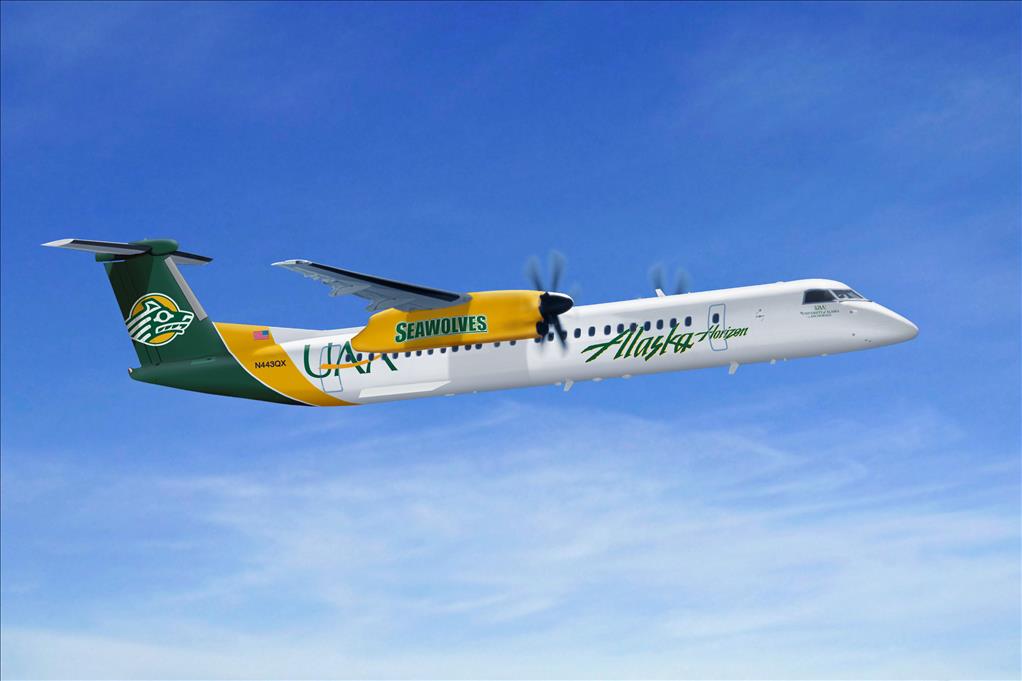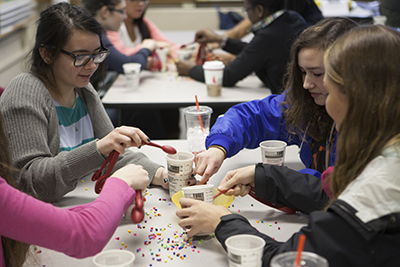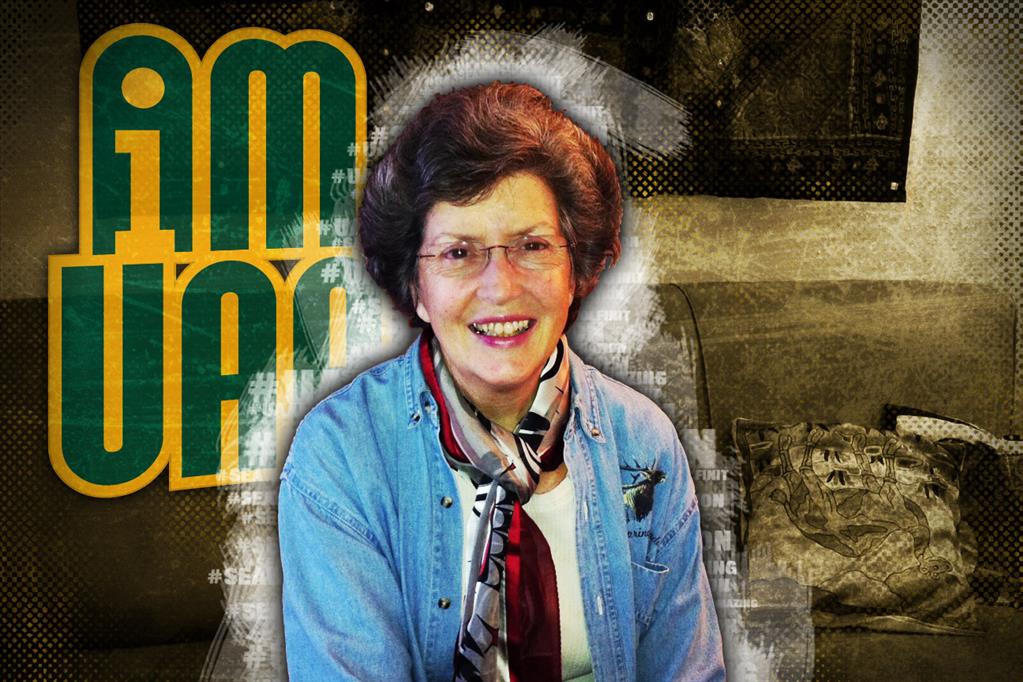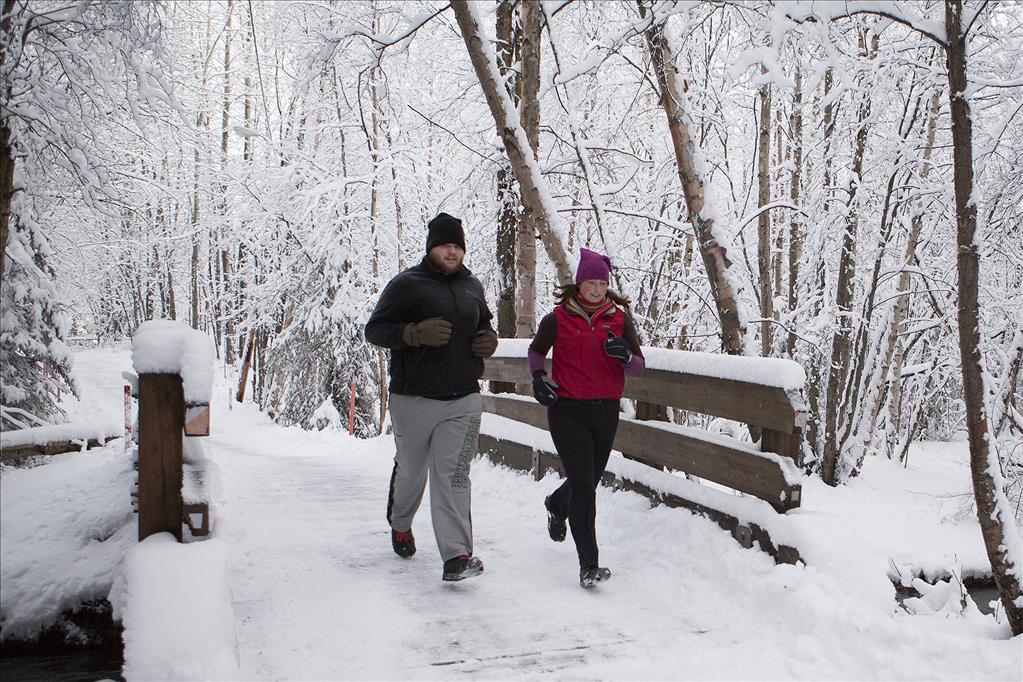UAA biologist at center of predation and climate change management with his caribou research
by Ted Kincaid |
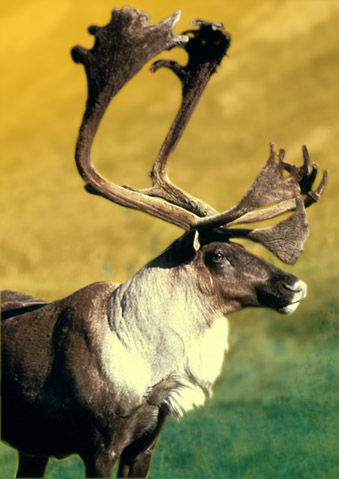 Two to three years ago there was a flurry of controversy over aerial wolf hunting
on Unimak Island in Alaska's Aleutian Islands chain. Not the first controversy of
predator management in Alaska (and it probably won't be the last), but this particular
scenario ended in a decision to instead do further research on the habitat of Unimak
Island as a factor in its dwindling caribou population.
Two to three years ago there was a flurry of controversy over aerial wolf hunting
on Unimak Island in Alaska's Aleutian Islands chain. Not the first controversy of
predator management in Alaska (and it probably won't be the last), but this particular
scenario ended in a decision to instead do further research on the habitat of Unimak
Island as a factor in its dwindling caribou population.
"We really have to understand first that the caribou populations aren't limited by something else, that we're not confusing poor habitat for predator influences," says UAA biologist Don Spalinger, who is currently involved with federal and state agencies in further examining the situation on this island in the Izembek National Wildlife Refuge.
The situation is that the caribou population on Unimak Island has decreased from about 1,200 animals in 2002 to as low as just 220 in 2012.
Spalinger has made it his life's work to examine the relationship between herbivores and their habitat, "understanding the bottom-up relationship" between them. "We've never really understood what it is about landscapes that make good food or bad food for animals and how that translates to animal productivity," he says. "As a consequence we make mistakes in terms of not knowing the capacity of habitats to support animal populations, and our lack of understanding of habitat confounds our ability to resolve such controversies as controlling wolf predation."
When he began graduate school in 1976, Spalinger focused primarily on mule deer and their habitat in Nevada and since then his research has grown to the scope of "the nutritional ecology of large herbivores in northern ecosystems...[and] how habitats and plant communities influence the survival and productivity of these animals," from mule deer to moose to caribou.
One theory related to Unimak Island is that it simply doesn't have the habitat to support a large caribou population. Past studies have shown, in fact, that this isn't the first time that Unimak Island caribou have disappeared and then reappeared. So, for the last two years, Spalinger has teamed up with the U.S. Fish and Wildlife Service, Alaska Department of Fish and Game and University of Alaska Fairbanks to try to shed some light on the habitat factors. Funded mainly at the federal and state level, Spalinger also received some INNOVATE Award money from UAA in 2012 to acquire high resolution satellite imagery of the island.
"What we've done so far is to focus on trying to understand what is actually out there," says Spalinger. "There's been virtually no work on Unimak Island to understand what the habitats are, where the caribou are, what they're eating and the nutritional value of those plants. The system is completely unknown."
Goal number one, then, was to map the vegetation of the island, to look at the abundance distribution and nutritional quality of the foods available to the caribou.
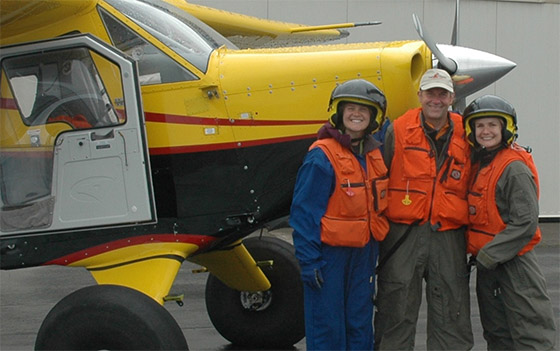
UAA 2011 Unimak Island field research team (from L to R): Undergraduate student Annie
Farner, Don Spalinger, Ph.D., and graduate student Kate Legner.
Quantifying carrying capacity is harder than it sounds
To get a better idea of the setting, let's picture Unimak Island in our mind's eye. It's 72 miles long, 60 miles wide and very remote. There is virtually no access except for a handful of fixed wing landing sites (helicopters aren't often approved to land in designated wilderness); the weather is characterized by high winds, rain and low clouds; there are more bears than either humans or caribou; and its decent-sized mountain range is home to one of the 10 most active volcanoes in the world, Mount Shishaldin (elevation 9,373 feet).
Not an easy place to track such a small herd of caribou, number one, and two, not an easy place to map.
In their first year, Spalinger and his team of two graduate students (Kate Legner of UAA and Brian Atkinson of UAF under Professor Norm Harris) were able to complete most of the aerial photography and ground mapping of the vegetation itself: what is there and how it is distributed. This year, they went out and gathered samples for nutritional analysis. The grad students are now in the process of computerizing their aerial and ground surveys to produce a complete map.
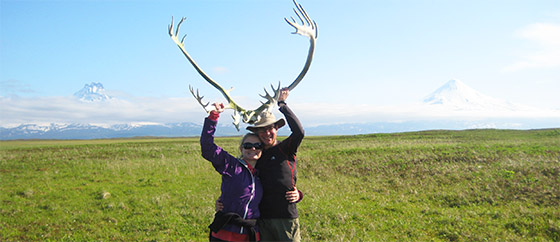
UAA graduate student Kate Legner and UAF graduate student Brian Atkinson find evidence
of the elusive caribou herd on Unimak Island, currently the subject of habitat research
under UAA's Don Spalinger, Ph.D.
The nutritional analysis is a little trickier, mostly because they weren't able to track animals to witness what they were actually eating. Instead, the team has to rely on the chemical fingerprints of plants to decipher the caribou diet, and those chemicals will identify a plant in an animal's feces if the animal has, in fact, ingested and digested it.
Spalinger already has one interesting observation.
"Lichens have always been an important component of caribou diets," he says, explaining that this is basically found worldwide. "Lichen is one of the established important food items for caribou, primarily for winter, but also for summer. Unimak Island has no lichens, or virtually no caribou lichens, anyway. So our first question, then, is what are they eating out there?
But that is only the first question. After they've figured out what the caribou have been eating (through chemical analysis of plant compounds in their feces), the team has to determine how much of these plants are actually available to the animals and what are the overall nutritional values. Put all those pieces together and we are closer to understanding the true carrying capacity of caribou on Unimak Island.
"We'll have a first guess at how many animals should be able to be supported on the island based on the composition of the habitat," says Spalinger. "Is that 5,000 or 300, and if it's 300, and that's what exists now, then we're OK. And furthermore, perhaps, we shouldn't do anything to the predators; they're in balance. Or maybe the island can support a lot more caribou and something else, in fact, is the factor driving the population down."
From predator management to climate change management
Digging a little deeper into plant nutrition also takes biologists down another path. To start with, in Spalinger's 35 years of herbivore/habitat research he has observed just how variable a landscape can be over time.
"One year the animals might be eating plant A, and the next year at the very same time, they might be eating plant B," he says. "We think that weather has a big impact on what the nutritional qualities of plants are, and we believe that the mechanisms that connect climate to plant quality likely involve important soil microbial processes." In other words, what effect does the weather have on the soil that transfers nutrients to plants that transfers nutrients to a large herbivores?
In effect, we have to look at the dynamics of the whole ecosystem. It is part of a larger climate change discussion. And Spalinger notes that several biologists at this point in time have suggested that climate change is going to have a severely negative impact caribou population around the circumpolar north. In fact, 80 percent of circumpolar caribou populations are declining, but there's no real solid evidence as to why. Among the swaths of declining populations are pockets of herds that are growing or stable in those same regions.
"There are indications of an underlying pattern," Spalinger says. "And those connections are what we're trying to put together in a mechanistic sense, to understand all of these things and see if we can predict what will come next. And no one has looked at the populations across the circumpolar regions as a whole and in comparison to each other."
So that is where Spalinger is headed next. "We will be expanding our research from Unimak Island all the way into Western Alaska, collaborating with Fairbanks, and extending it even to all Arctic herds in the hopes of developing a consortium of researchers," he says. "Unimak has been a test bed for our techniques and for developing our approach to expand to more of Alaska and the circumpolar north."
What started as moose research became caribou research. What started as Unimak Island in the Aleutian chain has become greater Alaska and the rest of the circumpolar north worldwide. What started as a predation management question has become a greater climate change question. Don Spalinger is hot on its trail.
 "UAA biologist at center of predation and climate change management with his caribou
research" is licensed under a Creative Commons Attribution-NonCommercial 4.0 International License.
"UAA biologist at center of predation and climate change management with his caribou
research" is licensed under a Creative Commons Attribution-NonCommercial 4.0 International License.










